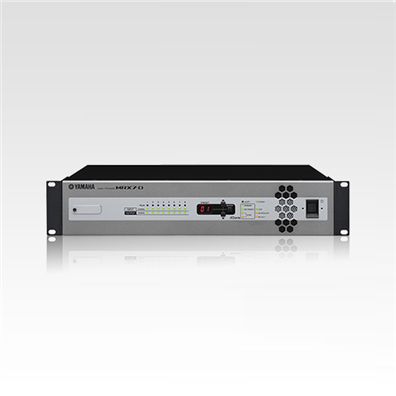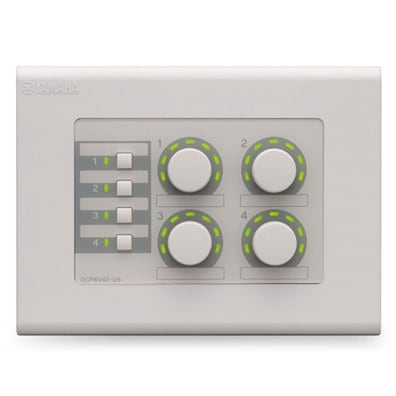ITOKI Tokyo Innovation Center
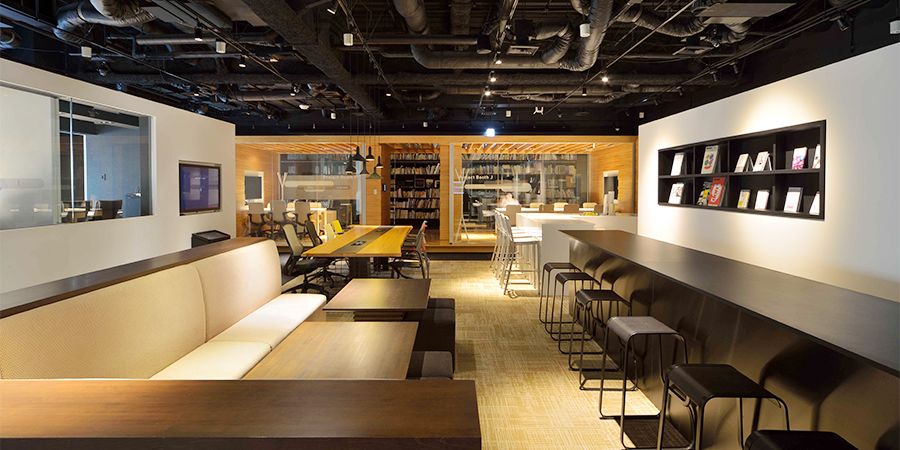

The ITOKI Tokyo Innovation Center “SYNQA” was established in 2012 as an open innovation facility that could nurture win-win relationships between the ITOKI CORPORATION and collaborating partners, and provide fertile ground for new businesses and growth. A Yamaha MRX7-D signal processor and DCP4V4S-US control panel units were installed in the TEAM LAB area on the second floor of the facility. We spoke with Mr. Kei Akiyama, manager of ICT Solution Development Office, Solution Development Dept. Group, R&D Division (left in the photo), and Mr. Akihiro Ikawa, manager of AV&ICT System East Japan Promotion Office (right in the photo) to learn more about the facility and their decision to adopt Yamaha equipment for the audio installation.
Please begin by describing the SYNQA concept.
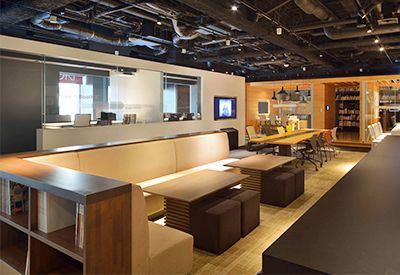
Mr. Akiyama:
ITOKI has previously established operational “live office” spaces that could be seen at our showrooms. But these days there are limits to what one company can offer, so we felt it would be important to join forces with our partners to create new value through “open innovation.” That became the SYNQA concept. The WORK CAFÉ on the first floor is an open space that is used by ITOKI for related business. The TEAM LAB area on the second floor is dedicated to the creation of new value with our collaborators. And the SYNC OFFICE on the third floor is our live office that is open for visiting.
It is a well-designed creative environment that is likely to give birth to great ideas.
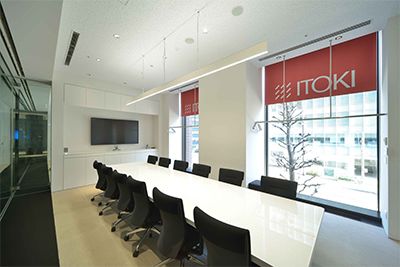
Mr.Ikawa:
Thank you very much. TEAM LAB provides meeting spaces where we can exchange ideas with outside guests, but it also functions as a showroom where ITOKI solutions are on display in operational, real-world form.
How is the MRX7-D being used in the TEAM LAB area?
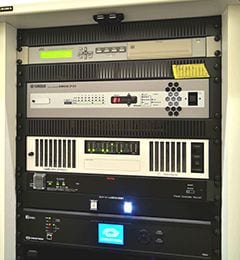
Mr.Ikawa:
The MRX7-D serves two main functions: in addition to delivering speech privacy sound, it provides background music and announcements. The background music data is stored on an SD memory card that is inserted directly into the MRX7-D. The MRX7-D itself is located in the back yard area behind the reception desk.
How is the floor divided into zones?
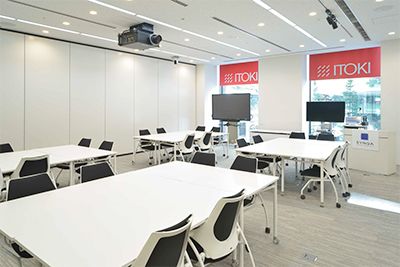
Mr. Ikawa:
The floor is divided into seven zones that include the project rooms, seminar rooms, incubation space, reception area, hallway, and other areas. The MRX7-D distributes the necessary audio to all zones. The speech privacy and background music volume for all zones can be adjusted from two DCP4V4S-US control panels, one at the reception desk and one in the lobby.
The switches and rotary controls on the panels allow for easy, intuitive adjustment. Is it also possible to control the MRX7-D from the project and seminar rooms?
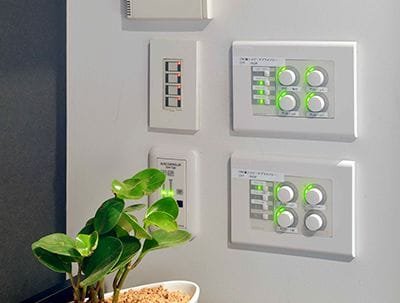
Mr. Ikawa:
Yes. In addition to the MRX7-D, the equipment rack in the back yard houses a Crestron PRO3® control system. iPads running a dedicated control app are provided in the project and seminar rooms, allowing convenient remote control of audio from the MRX7-D via the PRO3 system. The same iPad app can also be used to adjust the lighting in each room, raise and lower the blinds, control the projectors and screens, and more.
Why was the MRX7-D chosen for the TEAM LAB facility?
Mr. Akiyama:
We have installed speech privacy systems in a number of offices to minimize the possibility that sensitive conversations taking place in conference rooms and other areas might be overheard. We found that the Yamaha VSP-1 Speech Privacy System was particularly effective in masking conversations with relatively low-volume speech privacy audio. The VSP-1 system is highly valued in a large number of offices for that reason.
Mr. Ikawa:
But although the Yamaha speech privacy system is highly effective, not many people are aware of its existence. Our hope that people would experience its effectiveness here at TEAM LAB was another reason for choosing the MRX7-D.
Why did you choose the MRX7-D over the VSP-1 for speech privacy in this case?
Mr. Ikawa:
One important feature was the high level of integration it provides, allowing audio for multiple spaces to be managed with a single device. It is easy to install and operate a single VSP-1 system, and that would be an ideal choice for relatively small spaces, but central, overall control is not possible in larger facilities that would require multiple VSP-1 units. With the MRXD-7 it is easy to distribute speech privacy masking audio to multiple zones and control it all from a single location. Another advantage is that the MRX7-D supports Crestron control, allowing speech privacy masking to be controlled via Crestron App in iPads in each room functioning with the Yamaha equipment.
Are there any advantages to the MRX7-D other than central control?
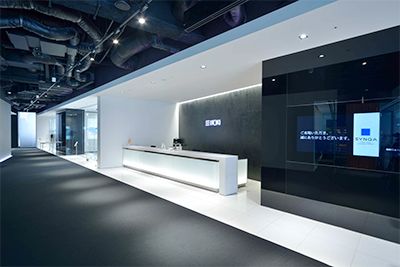
Mr. Akiyama:
Absolutely! The second big advantage is that speaker installation locations aren’t critical. We have installed many speech privacy systems, but often ran into problems with conversations being transmitted via ventilation and AC ducting, or leaking through the ceiling. For that reason we always recommended installing the VSP-1 close to the ceiling. Since the VSP-1 is integrated with a compact speaker unit, installing it at a high location makes operation difficult, and appropriate mounting hardware must be provided.
Mr. Ikawa:
The MRX7-D can be used with independent ceiling speakers, so installation is easier and layout is more flexible.
Mr. Akiyama:
And the third reason is that a single MRX7-D unit can handle speech privacy as well as background music and announcements. That all-around multi-functionality is a major benefit.
What response have you received from guests regarding the speech privacy system?
Mr. Akiyama:
Many of our customers are concerned about information leakage in the office environment. It is essential to prevent sensitive business and personnel information from being overheard outside the meeting room. TV conferencing is being adopted more and more in the corporate environment, and in that situation participants often speak louder than they would in a normal conference, making conversations more easily overheard. The need for speech privacy is sure to increase.
What advantages does Yamaha’s original “information masking sound” have over other systems?
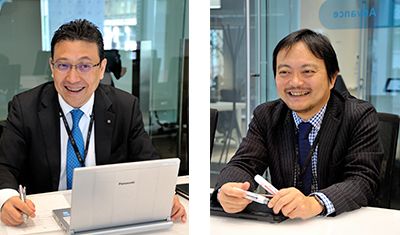
Mr. Ikawa:
There is a considerable need for sound masking technology, but most people are only aware of systems that utilize white noise. Such systems are only effective when the noise is delivered at a fairly high level that can be intrusive and uncomfortable. Many people in Japan simply don’t like white noise.
Mr. Akiyama:
The Yamaha speech privacy system employs an original “information masking sound” that is effective as to keep the volume 40% lower than other systems that utilize white noise. That is quite a significant difference in volume. The Yamaha masking sound includes sonic elements from waves and the forest, for example, giving it a pleasant, relaxing quality. People like its “healing” properties.
In closing, is there anything you’ve found that the MRX7-D is uniquely suited for?
Mr. Ikawa:
The MRX7-D is extremely flexible, allowing us to provide effective audio masking that prevents leakage of sensitive information discussed in meetings. Of course masking can be turned off whenever and wherever it isn’t needed. It also plays background music throughout the floor at lunchtime, and easily adapts to a wide range of situations. It even has a Scheduler function that can be used to automate operation at specified times of the day. Many of our guests show an interest in the many features and capabilities of the MRX7-D.
That you very much for your time!
ITOKI Tokyo Innovation Center SYNQA
ITOKI CORPORATION


